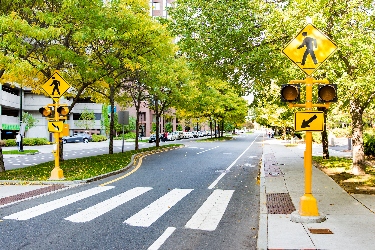How will I pay for injury surgery after a pedestrian accident?
Washington State Pedestrian Accident Attorney Explains Potential Options for Injury Payment
For pedestrians, even a minor collision with a vehicle may cause serious and significant injury, and require surgery to save your life, repair trauma, and restore function to your body. Without surgery, you could be left with chronic pain, limited movement, a lowered quality of life, deformities, or the inability to return to work.
You need a Washington State pedestrian accident attorney who can be instrumental in helping you pursue compensation from the at-fault motorist to cover your medical costs. Max Meyers Law is where accident victims get help.
Common Pedestrian Accident Surgeries
Pedestrian accident surgeries can have astronomical financial costs—in many cases, more than a person’s annual salary and certainly more than they can pay back in a reasonable amount of time. In fact, Americans currently owe a staggering $220 billion in medical debt, and a significant amount of that is tied to surgeries.
 But you need thorough medical treatment after suffering such a horrendous accident. A car coming into contact with a human can result in catastrophic blunt-force trauma, including injuries to soft tissue, organs, and bones. Because pedestrians rarely have any sort of head protection, traumatic brain injuries are also common.The most prevalent types of surgery following pedestrian accidents include:
But you need thorough medical treatment after suffering such a horrendous accident. A car coming into contact with a human can result in catastrophic blunt-force trauma, including injuries to soft tissue, organs, and bones. Because pedestrians rarely have any sort of head protection, traumatic brain injuries are also common.The most prevalent types of surgery following pedestrian accidents include:
- Back and neck
- Brain
- Soft tissue
- Surgery for setting broken or fractured bones
- Surgery for internal injuries and internal bleeding
- Plastic surgery
It’s important to note that surgical costs basically never happen independently of other medical expenses related to your injuries. Pedestrian accident survivors will also face:
- Emergency room bills
- Ambulance bills
- Doctor’s visits before and after surgery
- Prescription medication costs
- Medical supply expenses
- Rehabilitation and therapy costs
- Lost wages
Paying for Surgery Following Pedestrian Accidents
There are many options to help you cover medical expenses depending on the circumstances of the accident, your income, and your available insurance coverage. Most patients pay for surgery in one or more of the following ways.
Personal Injury Protection (PIP)
PIP is a type of insurance coverage that typically covers medical expenses, including surgeries, regardless of who’s at fault in the accident. If you have PIP coverage, you can file a claim with your own insurance provider to cover bills, including surgery costs. PIP coverage is required in some states, but not in Washington, where you have the option to decline the coverage in writing. Be aware that the standard minimum amount of coverage is $2,500—and in many cases, your surgery will be more than that amount.
Health Insurance
If you have a health insurance plan, it may be your primary source of coverage for surgical expenses. Health insurance plans vary wildly, though, so it’s vital to review your policy to understand the extent of coverage. Co-payments, deductibles, and co-insurance may still apply, but health insurance can significantly reduce out-of-pocket costs. Again, even with health insurance, you may be facing thousands of dollars of medical costs, especially if you have a high-deductible plan.
Medical Payments Coverage (MedPay)
Similar to PIP, MedPay is an optional coverage that can be part of an auto insurance policy. It covers medical expenses, including surgery, for the insured and passengers, regardless of fault. Again, the amount of MedPay coverage you have may vary.
Medical Liens
In some cases, individuals may not have immediate access to insurance coverage or funds to pay for surgery. Medical liens are agreements between the injured party and medical providers, where the provider agrees to postpone billing until a legal settlement is reached. This option allows the injured party to receive necessary medical treatment without upfront costs, with the understanding that the medical provider will be reimbursed from any settlement or court award.
Medicaid or Medicare
If you qualify, government-sponsored health programs like Medicaid or Medicare may cover medical expenses, including surgery.
Liability Insurance
If you’re not at fault in the accident, the at-fault driver’s liability insurance may cover your accident-related medical expenses, including surgery. The process involves filing a claim with the at-fault driver’s insurance company.
However, these claims are often complicated because they require you to provide evidence to prove the motorist’s negligence, determine a valuation for your claim to cover surgery costs and other economic and non-economic damages, and negotiate with insurers that may reduce or even deny compensation. Hit and run pedestrian accidents are even more complex, especially if the police investigation is ongoing as you’re trying to physically, emotionally, and financially recover.
At Max Meyers Law, we understand how devastating it is to experience such a tragedy, and we work hard for our clients’ best outcomes in these cases.
